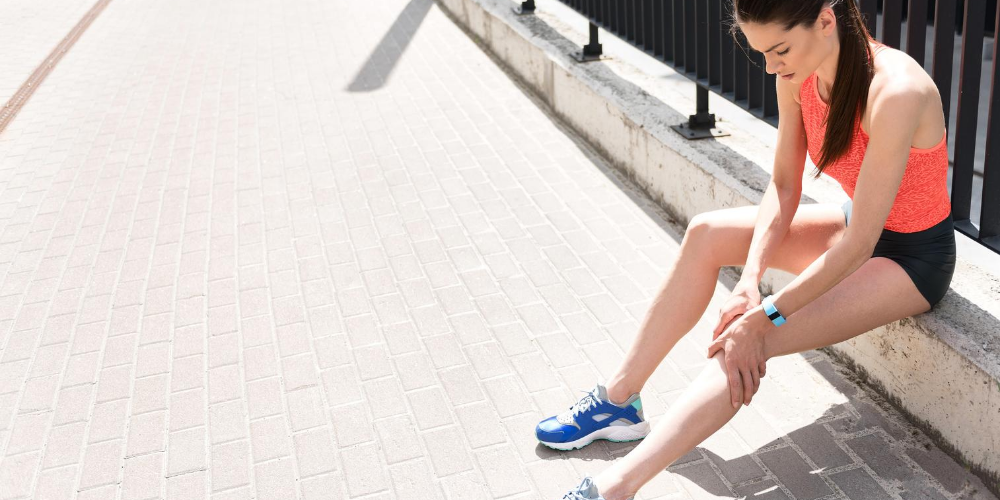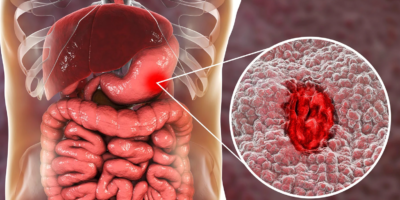A number of things can cause mastalgia, the medical name for breast pain. Hormonal shifts cause cyclic breast discomfort. The onset of puberty renders a girl’s breasts more sensitive. Many teenage girls and women experience heaviness and soreness just before menstruation, a symptom that may be part of the great constellation of premenstrual syndrome. Breasts enlarge during pregnancy—more so just after the birth. Before nipples toughen, breastfeeding can initially cause soreness. During that time, women are vulnerable to a breast infection, called mastitis.


1. Hot-Cold Compresses
How it works: Alternating warmth and cold will soothe inflamed breast tissue to give relief while nursing.
- PREPARATION:
- 1 bowl of hot water (should be a soothing temperature)
- 6 ice cubes, crushed
- DIRECTIONS: Immerse a washcloth in the hot water, wring out, and form a compress. Hold on to the inflamed breast for 5 minutes. Fill a resealable plastic bag with the crushed ice and wrap it in another washcloth. Apply the cold compress to the same area for 5 minutes. Repeat the process for the total time of 30 minutes.
- YIELD: 01 APPLICATION
- WARNING: If nursing, don’t apply cold just before feeding your baby, as doing so can slow your milk letdown.
2. Tame The Tenderness
How it works: AWarm water relaxes the body and stimulates circulation. Lavender is a relaxing and anti-inflammatory agent. Although the medicinal properties of Epsom salts have not been confirmed, they do contain magnesium, which also helps relax muscles. People also use magnesium-containing compresses to manage tissue infections.
- PREPARATION:
- 2 cups (480 g) Epsom salts
- 10 drops lavender or other favorite essential oil
- DIRECTIONS: Warm water relaxes the body and stimulates circulation. Lavender is a relaxing and anti-inflammatory agent. Although the medicinal properties of Epsom salts have not been confirmed, they do contain magnesium, which also helps relax muscles. People also use magnesium-containing compresses to manage tissue infections.
- YIELD: 01 APPLICATION
- NOTE: Although it feels wonderful, bathing can also lead to nipple dryness, so moisturize your nipple area right after bathing to seal in moisture. A simple nonfragrant, lanolin-based cream will work. You can also use a little coconut or jojoba oil.
3. Soothing Baby-Safe Nipple Cream
How it works: Coconut oil, shea oil, and cocoa butter are soothing and emollient. This mixture prevents cracks, which are painful and through which bacteria can enter to cause infection.
- PREPARATION:
- 1¼ cup (281 g) coconut oil
- ¼ cup (55 g) shea butter
- ¼ cup (55 g) cocoa butter
- DIRECTIONS:
In a small bowl, mix together all the ingredients. If too hard to mix, place in a heatproof bowl and immerse in a pan of hot water on the stovetop until softened (a tempered glass measuring cup works well here; hang it on the side of the pot by its handle). For a creamy texture, mix the ingredients together in a blender.
Put mixture into a clean bottle with a cap. Store in a cool, dry place. Apply after each nursing, taking a small amount and warming it in your palms before spreading it on the nipple.
- YIELD: ¾ CUP (165 g) FOR MULTIPLE APPLICATIONS
4. Avocado-Walnut “Good Fat” Salad
How it works: The good fats found in avocados and walnuts, as well as in seeds, vegetables, and fish, reduce inflammation. In addition, walnuts are rich in magnesium, which may relieve premenstrual fluid retention, and in alpha-linoleic acid, an anti-inflammatory essential fatty acid.
- PREPARATION:
For the salad:
2 teaspoons (10 ml) fresh lime juice
1 avocado, peeled, pitted, and sliced
2 ears corn, with husks
2 cups (110 g) chopped Bibb lettuce
½ cup (60 g) crushed walnuts
½ cup (50 g) chopped black olives
½ cup (58 g) thinly sliced radishes
For the dressing:
½ cup (120 ml) olive oil
¼ cup (60 ml) white wine vinegar
Sea salt
- DIRECTIONS:
- To make the salad: Preheat the oven to 450°F (230°C, or gas mark 8). In a small bowl, pour the lime juice over the avocado slices and toss lightly to coat. Set aside. Place the corn on a baking sheet and roast for 15 to 20 minutes. Remove the corn from the oven, let cool, husk, and cut the kernels from the cob. In a large bowl, combine the corn kernels, lettuce, walnuts, black olives, and radishes. Fold in the avocado mix and toss.
- To make the dressing: Blend the oil and vinegar in a blender for 12 seconds and whisk together. Add sea salt to taste. Divide the salad among four plates, if serving at once. Serve the dressing on the side.
- YIELD: 04 SERVINGS
5. Flax and Raisin Muffins in a Mug
How it works: Clinical research shows that eating a muffin containing 25 grams of flaxseed meal daily for three months significantly reduces symptoms of severe cyclic breast tenderness.
- PREPARATION:
For the dry ingredients:
½ cup (55 g) flaxseed meal
1 teaspoon (5 g) baking powder
1 teaspoon (2 g) ground cinnamon
1 teaspoon (½ packet [0.5 g]) stevia
For the wet ingredients:
2 large eggs
2 teaspoons (10 ml) vegetable oil
2 tablespoons (18 g) golden raisins
A dollop of Greek yogurt (optional)
A drizzle of honey (optional)
- DIRECTIONS:
Mix all the dry ingredients in a small bowl. Stir in the wet ingredients. Fold in the raisins.
Spoon the mixture into two microwave-safe mugs. Microwave each on HIGH for 1 minute.
Enjoy with Greek yogurt or honey, straight from the mug.
- YIELD: 02 SERVINGS
6. Beneficial Black Bean Salad
How it works: Some studies show that magnesium supplementation reduces premenstrual syndrome symptoms, such as water retention
and breast tenderness. The recommended daily intake is 310 milligrams for women. Beans and lentils are rich in magnesium. Other good sources include wheat bran (89 milligrams per ¼ cup [25 g]), almonds (80 milligrams per ounce [28 g]), cooked spinach (78 milligrams per ½ cup [90 g]), cashews (74 milligrams per ounce [28 g]), and peanuts (50 milligrams per ounce [28 g])
- PREPARATION:
- 1½ cups (355 ml) water
- ¾ cup (146 g) uncooked brown rice
- 1 can (14 ounces, or 400 g) black beans, drained and rinsed
- 1 cup (164 g) cooked corn kernels
- 4 scallions, chopped
- 1 jalapeño pepper, seeded and minced
- 1 red bell pepper, seeded and diced
- 1 medium-size tomato, seeded and chopped
- 2 tablespoons (28 ml) olive oil
- 2 tablespoons (28 ml) lime juice
- 1 teaspoon (1 g) dried oregano
- ½ cup (8 g) fresh cilantro
- 1 avocado
- DIRECTIONS:
Combine the water and rice in a small saucepan and bring to a boil. Lower the heat to a simmer and cook until tender, about 30 minutes.
Combine the beans, corn kernels, scallions, peppers, and tomato in a large bowl. In a smaller bowl, whisk together the olive oil, lime juice, and oregano. Drizzle this into the large bowl and mix. Refrigerate for 2 hours.
When ready to serve, toss in the cilantro. Peel, pit, and slice the avocado and arrange on top of the salad before serving.
- YIELD: 08 SERVINGS
7. Simply Good Broccoli
How it works: Broccoli and almonds both provide calcium and magnesium. Studies show that calcium supplements (1,000 to 1,200 grams a day) have decreased premenstrual symptoms, including pain. Magnesium supplements are often recommended for treating PMS symptoms.
- PREPARATION:
- 1 broccoli crown, broken into 8 or so florets
- 2 garlic cloves, thinly sliced
- 2 tablespoons (30 ml) olive oil
- ¼ cup (25 g) crushed almonds
- Sea salt
- DIRECTIONS: Wash and slice the broccoli florets. Combine the broccoli and garlic in a skillet. Cover with olive oil and toss. Place the skillet over high heat and stir-fry the broccoli mixture continuously for about 2 minutes. Remove from the heat and then toss in the crushed almonds and sea salt to taste. Serve while steaming hot.
- YIELD: 02 SERVINGS
Lifestyle Tip
- Decaffeinate. Try soothing herbal teas instead of coffee. Some women notice that caffeine aggravates premenstrual breast soreness and fibrocystic breasts.
- When you are nursing, feed your baby often. This helps empty your breasts and make them more comfortable. After a nursing session, air-dry your nipples. This will help prevent cracking and itching.
- Get support. Wear a sports bra when exercising. Also, give your breasts some time outside the harness so that blood and lymph can freely circulate.
When to call the Doctor
Call your doctor’s office if you notice anything new or unusual, such as:
- A new lump, regardless of whether it’s tender, in your breast or armpit
- Nipple discharge (unrelated to breastfeeding an infant)
- Pain
- Puckering, dimpling, thickening, or discoloration of the skin
If you’re breastfeeding a baby and have any problems, including a suspected breast infection, call. More serious cases of mastitis may require antibiotic treatment.






Leave a Reply